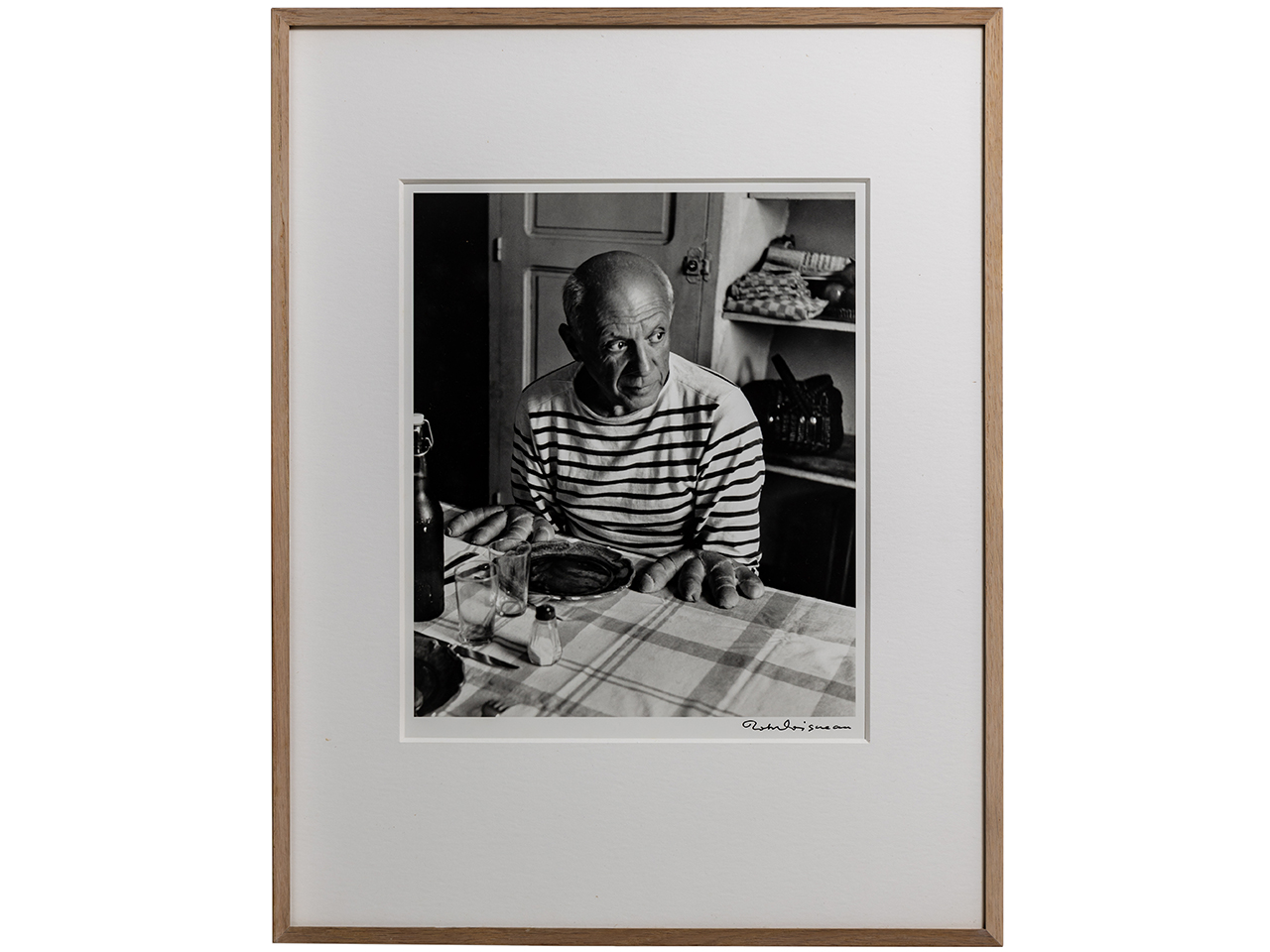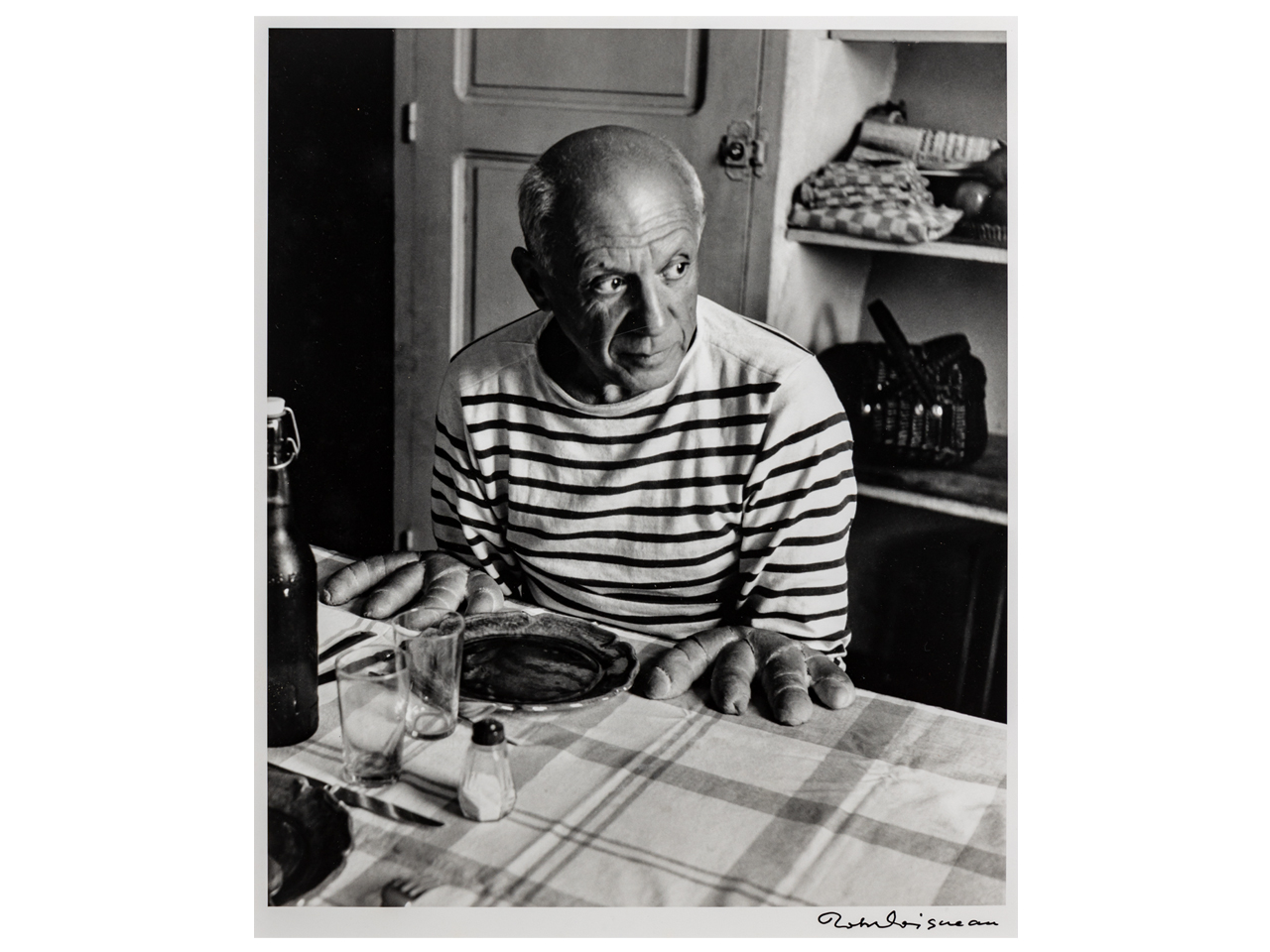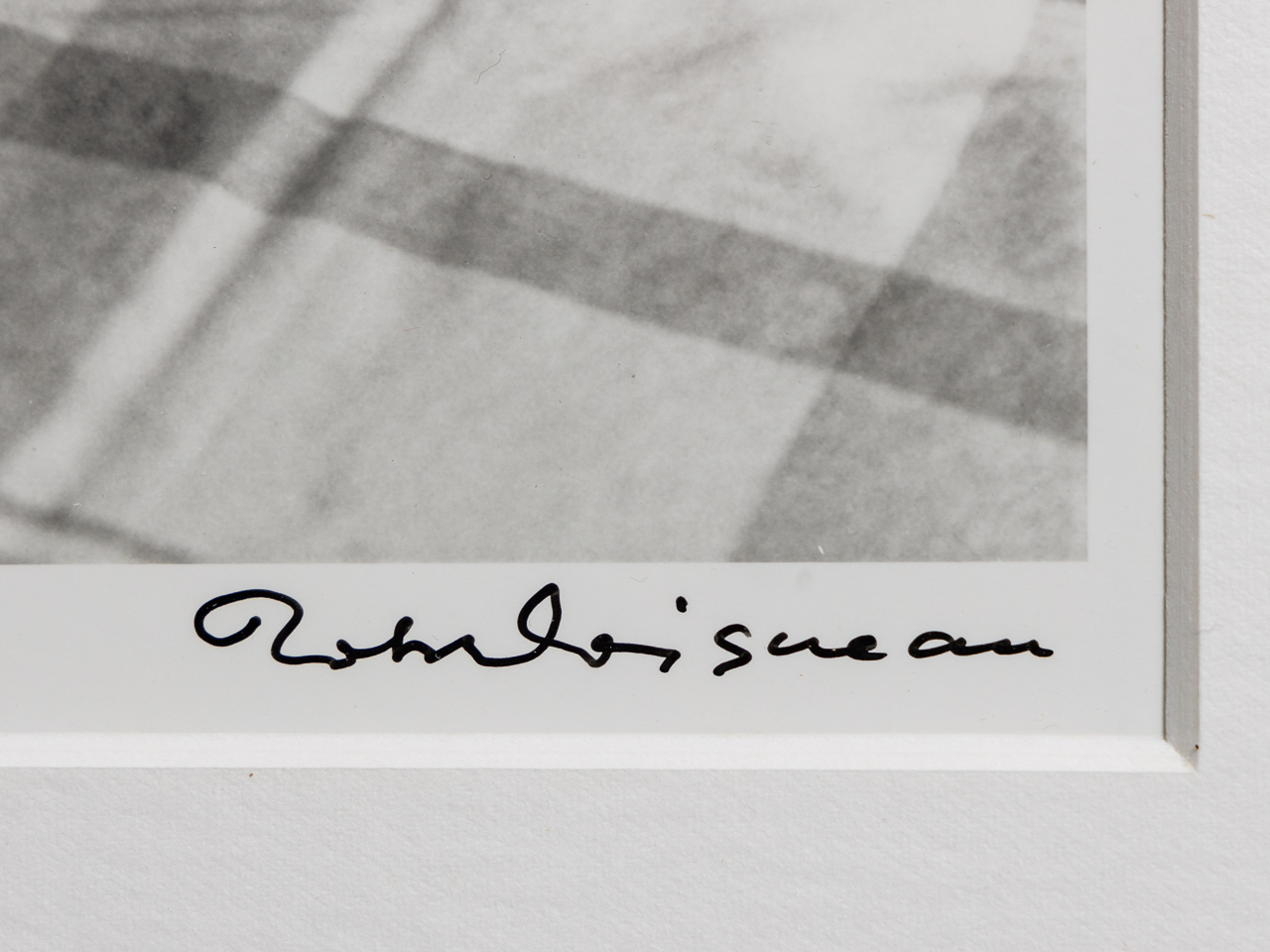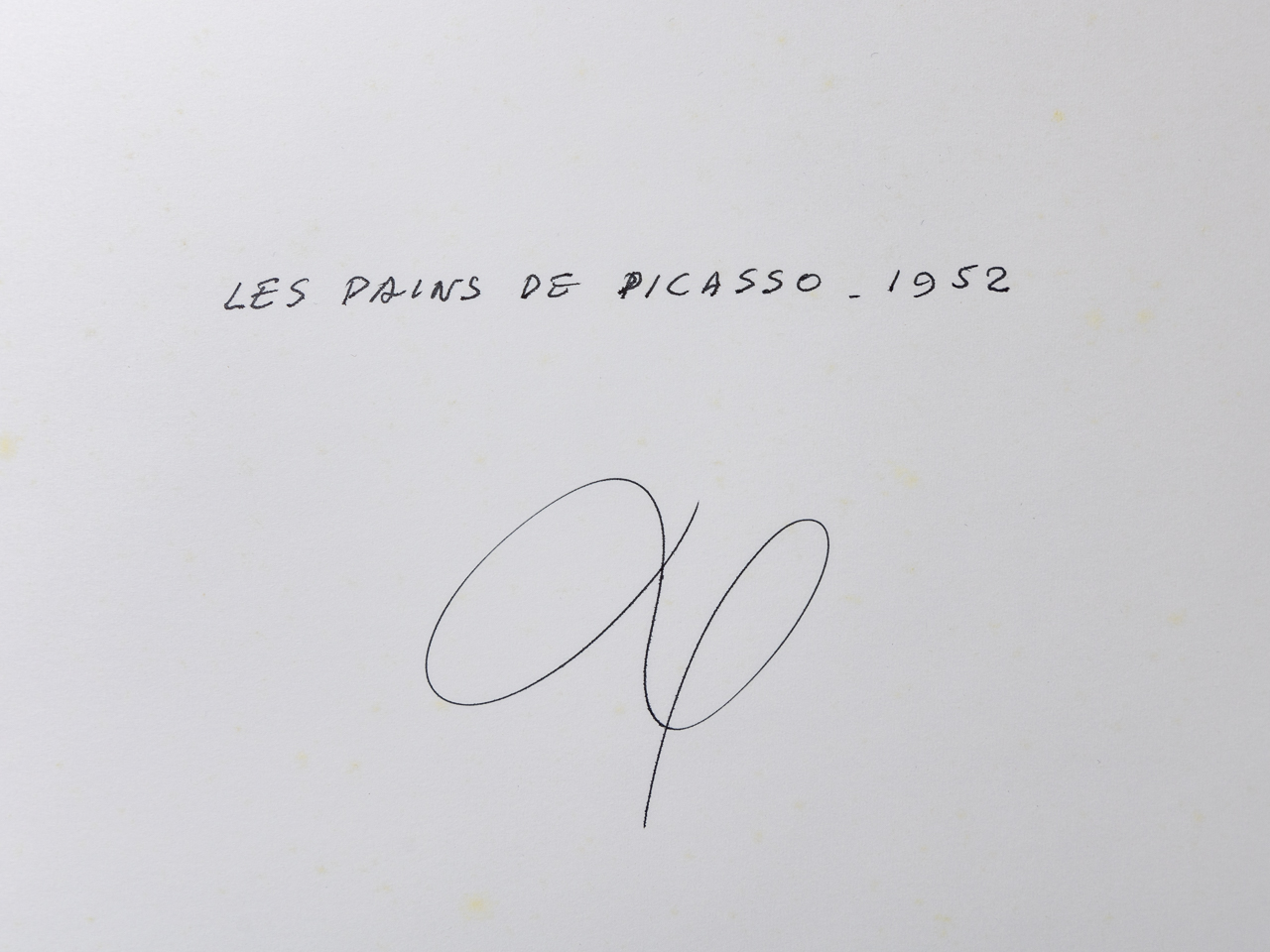ロベール・ドアノー/Robert Doisneau
ロベール・ドアノー(1912~1994)は、20世紀を代表するフランスの国民的写真家です。国内外の多くの人が一度は目にしたであろうモノクローム写真【パリ市庁舎前のキス】(1950年)に代表されるように、その卓越した洞察力とユーモアによって、ありふれた日常のなかにふと訪れる一瞬の喜びや美しさをとらえてきました。
ただし、上記の作品がアメリカの雑誌『LIFE』からの依頼で、「パリの恋人たち」というテーマのもと手がけられたように、彼の残した約45万点もの作品の多くが発注を受けて撮影されたものであること、写真家としての地位を確立してもなお、彼があくまで「芸術家」ではなく「職人」として撮影を続けてきた点は見落としてはなりません。かつて、城壁によって中心部のパリから隔てられた郊外は貧困層や移民たちの居住区であり、パリ南部郊外のジャンティイに生まれたドアノーもまた、十代から働くことを余儀なくされた労働者階級の家の子どもでした。それゆえ、彼にとって写真を撮ることは、生涯を通じて生活すること、生きるための糧を得ることに直結していました。ニーズに応じた仕事は、当然ながら発注元の要望や制限を伴いますが、そうした枠組みをドアノーはむしろ好ましく思い、粛々と撮影に勤しんだといいます。
そんな職業写真家ドアノーは、1925年から1929年にかけてエコール・エティエンヌ(現・芸術産業デザイン高等学院)で版画と石版画工の資格を取得後、医薬関係の広告を制作するアトリエ・ユルマンでレタリング・デザイナーを務めながら写真の技術を学び、1931年からは写真家のアンドレ・ヴィニョーの助手となり修業を積みました。1934年には、ルノー自動車工場専属に産業カメラマンとして入社しますが、写真の研究に没頭しすぎた影響で、たびかさなる遅刻を理由に解雇されてしまいます。それを契機に、1939年からフリーの写真家として活動を開始し、パリの南西部に隣接するモンルージュに自宅兼アトリエをかまえました。
ドアノーの作品では、主にパリの町並みを背景に庶民の日常を切り取ったものがよく知られていますが、パブロ・ピカソ(1881~1973)やジョルジュ・ブラック(1882~1963)といった名だたるアーティストたちの貴重なルポルタージュも数多く残しています。こうした写真は『ヴォーグ』をはじめ様々な雑誌に掲載されていましたが、ドアノー自身が特に気に入っていたのは、1946年から1954年にかけて携わった雑誌『ル・ポワン』の仕事だったそうです。同誌の依頼で撮影したピカソについては、「わたしがこの黒い小箱におさめたモデルのなかでも、ピカソは最高のひとりだ」という言葉を残しています。
ドアノーは、市井の人々にも著名なアーティストにも等しく、あたたかな眼差しと慎み深い敬意を注いでいます。「相手をこよなく愛してこそ、写真を撮ることが許されるのだ」という彼の信念と、依頼された仕事であるからこそ、自分だけでなく誰もがそれを見たときに幸せを感じられるような写真を撮ろうとする真摯さが、時代も国境も越えて愛され続ける作品を生み出したのでしょう。
Robert Doisneau (1912-1994) was one of France’s most celebrated photographers of the 20th century. He is best known for his monochrome photograph, Le Baiser de l’Hôtel de Ville (The Kiss by the Hôtel de Ville, 1950), an image familiar to people throughout France and beyond. With exceptional insight and humor, he captured fleeting moments of joy and beauty in everyday Parisian life.
However, it is important to note that a significant portion of the approximately 450,000 photographs he produced were commercial commissions. The famous Kiss itself is a prime example, having been staged for the American magazine LIFE for a feature on Parisian lovers. Even after achieving fame, Doisneau saw himself as a “craftsman” rather than an “artist”. Born in Gentilly, a southern suburb of Paris, he came from a working-class family and began working in his teens. For Doisneau, photography was always intrinsically linked to his livelihood. While commissioned projects came with client demands and restrictions, he reportedly embraced these constraints, diligently honing his craft within them.
After earning a diploma in engraving and lithography from the École Estienne between 1925 and 1929, Doisneau found work as a lettering designer at an advertising studio while teaching himself photography. In 1931, he became an assistant to photographer André Vigneau, further developing his skills. He was hired as an industrial photographer at the Renault factory in 1934 but was fired for being chronically late—a consequence of his passion for photography. This prompted him to become a freelance photographer in 1939, setting up his home and studio in Montrouge, just south of Paris.
While Doisneau is renowned for his scenes of ordinary life on the streets of Paris, he also produced valuable photo essays on famous artists like Pablo Picasso (1881-1973) and Georges Braque (1882-1963). These images were published in magazines such as Vogue, but Doisneau was especially fond of his work for Le Point magazine between 1946 and 1954. Of Picasso, whom he photographed for the magazine, he once remarked, “Of all the models I have captured in this black box, Picasso is one of the very best”.
Doisneau approached both everyday people and famous artists with the same warmth and humble respect. This philosophy, rooted in his belief that one must “deeply love the subject to be allowed to photograph them”, was paired with a sincere desire to create images that would bring happiness to all who saw them. The result is a body of work that continues to be cherished across time and cultures.




作品名:LES PAINS DE PICASSO
サイズ:29×24cm(1952年 ゼラチンシルバープリント)
価格:700,000円
価格は税抜き表示です

